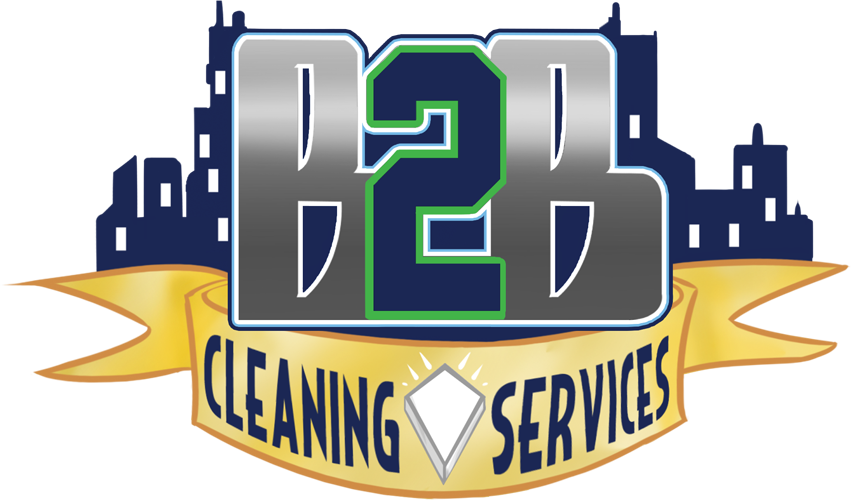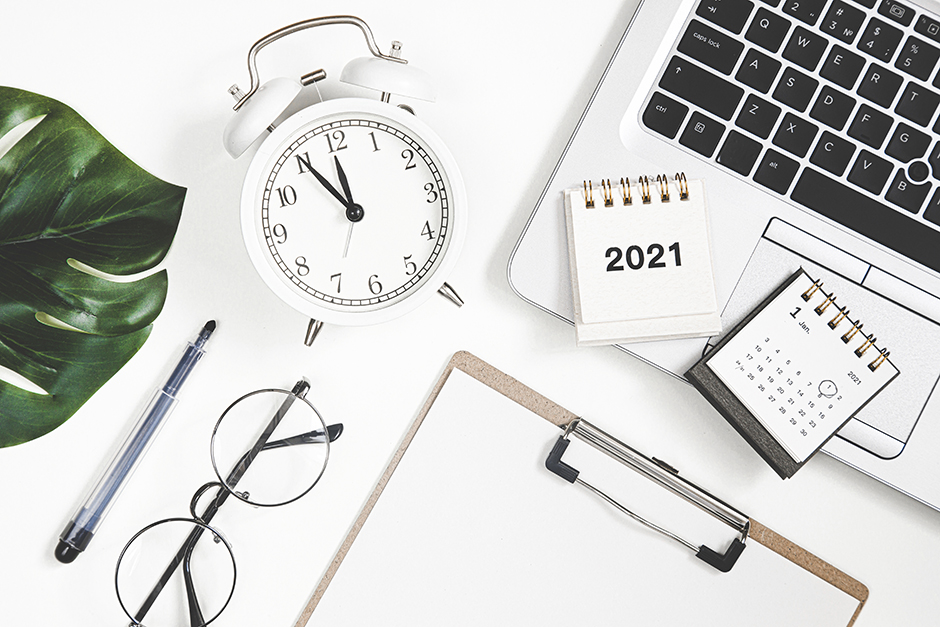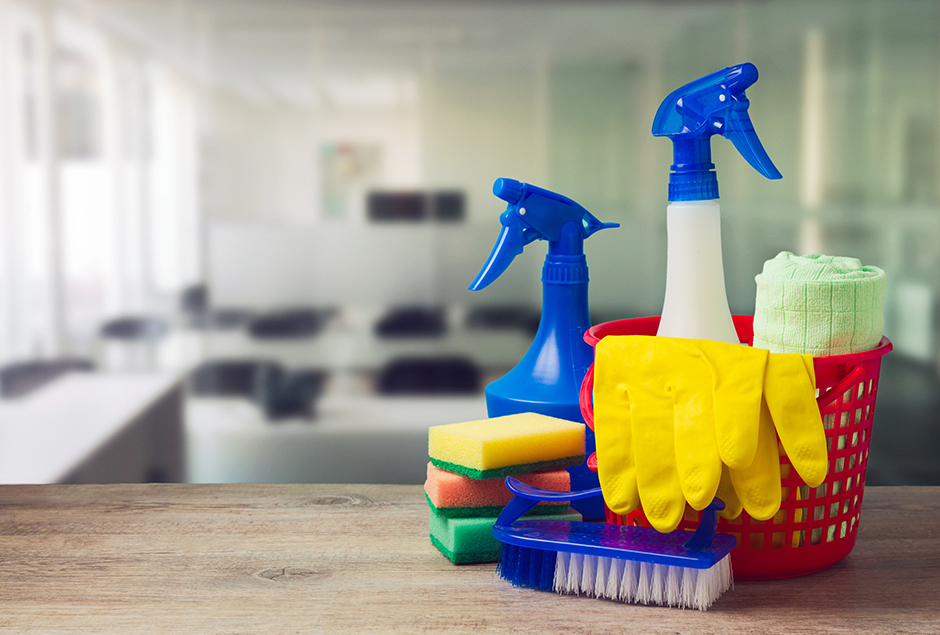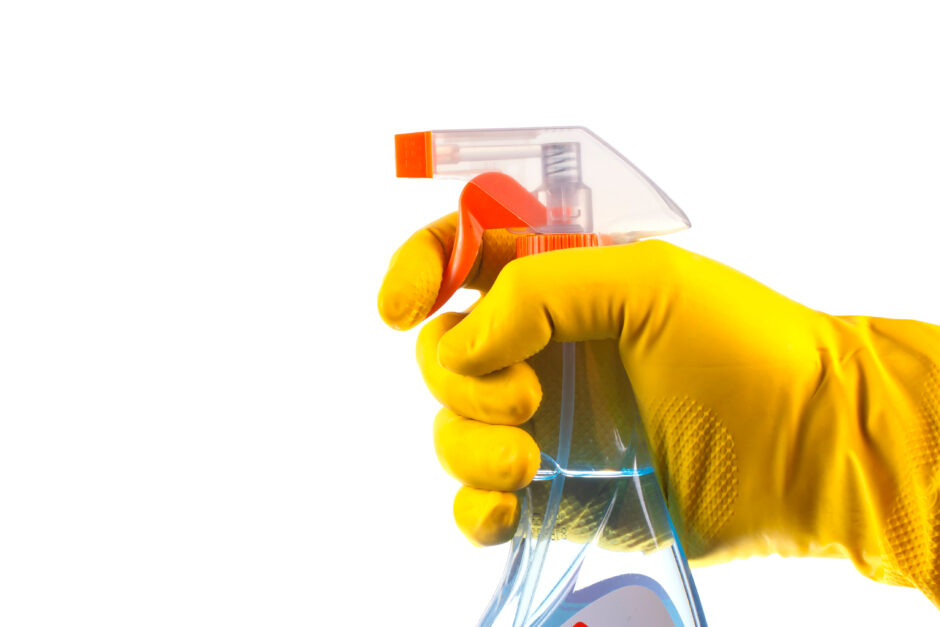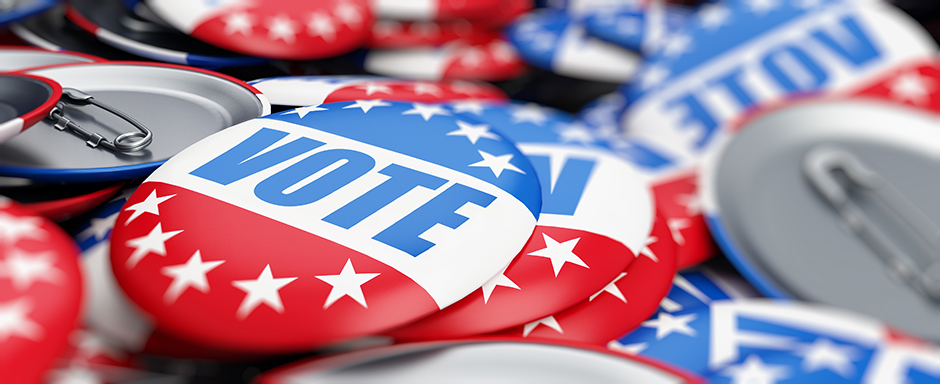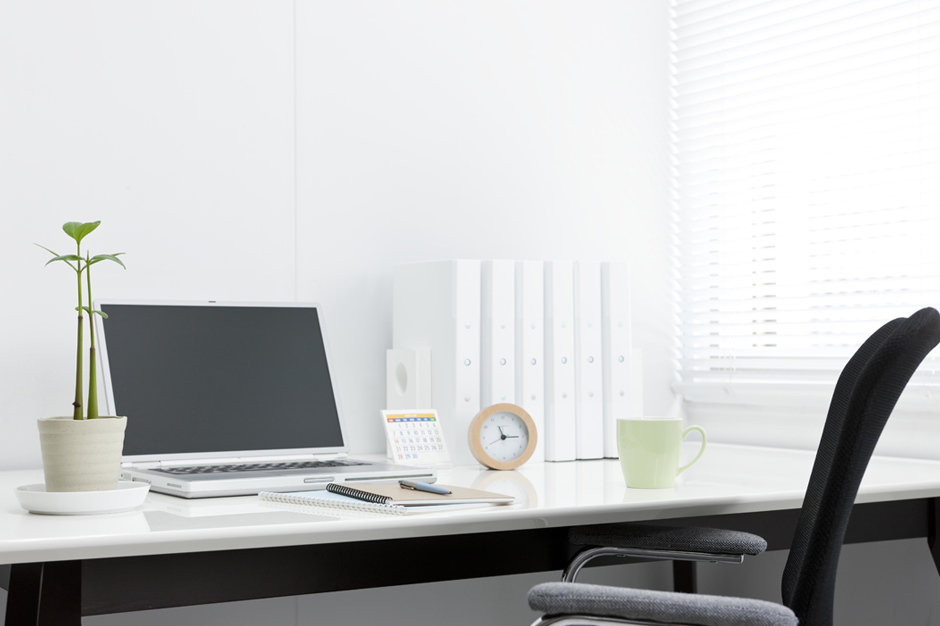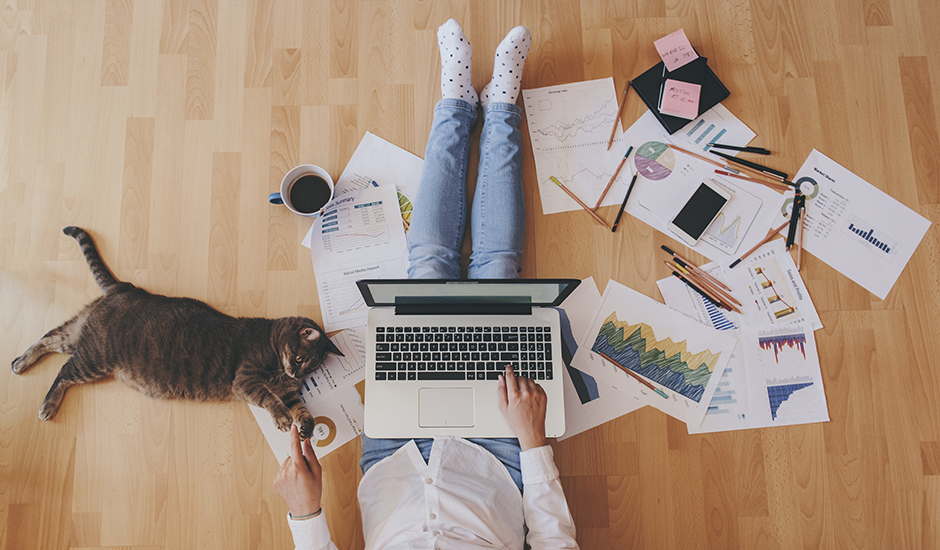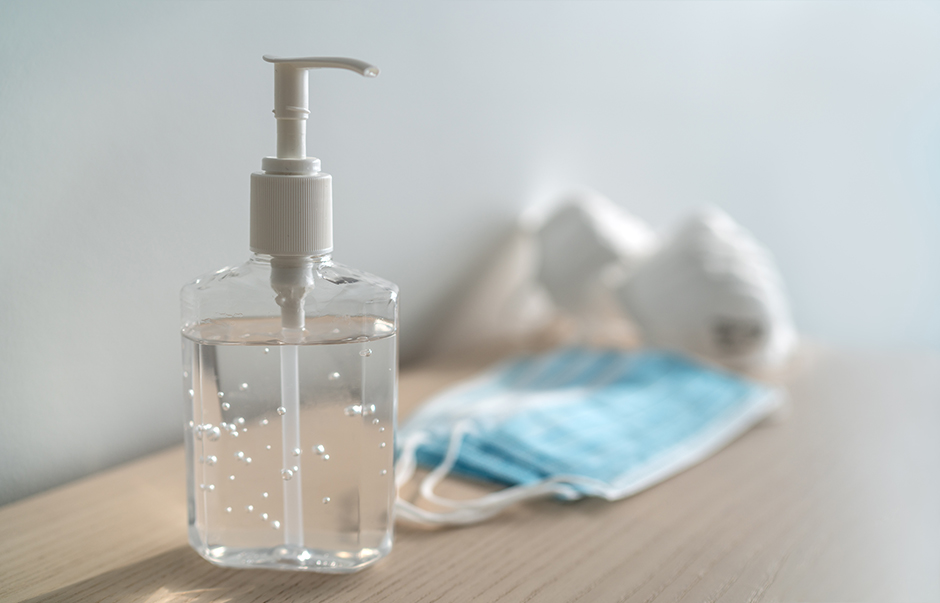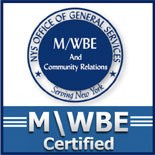12 Ways to Make Your Office Better for Your Health

You spend about half of your waking hours at your job. While certain jobs like construction or manual labor have clear hazards, you can’t assume that if you are clocking time in an office environment that it’s a healthy place to be. Many occupations deliver stress, sedentary behavior, and unhealthy habits along with the paycheck, which can take their toll both physically and mentally.
But whether you work from a home office or sit in a corporate cubicle, there are things you can do to make your workplace better for your health and wellbeing. Here’s how to give your office space a health makeover, according to the experts.
Remind yourself to sit less
People who work at desks should stand or walk around for at least two hours a day to avoid health risks related to too much sitting, according to a 2015 British study. “Moving around throughout your workday is really important,” says Robert Graham, MD, director of integrative health and wellness for Northwell Health System, in Great Neck, NY. “Not only is it good for you physically, but studies show that it can increase productivity and more likely to focus on the task at hand.”
Computer programs like Move for iOS or Big Stretch Reminder for Windows can remind you to take breaks at regular intervals; some even provide suggestions for stretches and exercises you can do at your workspace. Can’t install software on your work machine? Download an app to your smartphone, or use the free website RegularBreaks.com.
Clear the air
It’s not unusual for office environments to trigger what’s known as occupational allergies—sensitivities to chemicals in carpet, office furniture, or paint, for example, that can trigger problems like headaches and rashes. And even if you don’t have physical symptoms, it’s possible that stuffy air in your workplace could be hampering your brainpower: In a 2015 Harvard University study, offices with increased ventilation and lower levels of air pollutants were linked to better employee performance.
You may not be able to change furnishings or ventilation system at your job, but perhaps you can let in some fresh air by keeping windows open while you work. If that’s not an option, consider getting an air purifier with a HEPA filter for your desk.
Try a standing desk
If your workplace allows it, switching to a standing desk can help you sit less and move more during the day. But being on your feet all day can also lead to aches and pains, so look for a setup that allows you to adjust the height or your work station and use a chair when needed.
You can even make a DIY standing desk if you don’t have the space or resources for a real one; just be sure to keep your computer monitor at eye level, and your arms bent at 90 degrees to reach the keyboard, to avoid neck and arm pain.
Paint your walls green
Shades of green have been linked to enhanced creative thinking, says Sally Augustin, PhD, an environmental psychologist and principal at Design With Science. “And most of us have to be creative at work, whether we’re coming up with a new advertising slogan or figuring out how to analyze data on a spreadsheet in a different way,” she says. To get the most out of your walls, choose a hue that’s quiet and calming—like a sage or sea-foam green. “Colors that aren’t very saturated but relatively bright put us in the right sort of relaxed mental state to be doing knowledge work.”
Can’t paint your space? Wallpapering your cube with a green backdrop or adding green elements to your desk may also be helpful, Augustin says. And whatever you do, she adds, avoid red; it’s been shown to negatively affect analytical performance.
Add a plant
Bringing nature into your office can be a great way to inspire creativity and a feeling of wellness, says Augustin. “Plants are great from a psychological perspective,” she says. “You don’t want to pack too many into a small space, but it can be great to have a small plant on your desktop, or something a little larger in the corner of your office.”
Opt for green, leafy plants, rather than cacti—whose spikes can create the opposite of a relaxed feeling—or flowers with a strong scent, which can be distracting or irritating. Some plants, like the sansevieria, may even improve air quality in your office.
Display (a few) personal items
Decorating your desk can help you feel comfortable, which can reduce workplace stress and dissatisfaction, Augustin says. But to avoid a cluttered feeling, which can actually cause more stress, stick with just a few items.
“Pick out three or four things that are significant to you—like a family photo or an award you’re particularly proud of—and make sure those are in your view,” she says. “But remember that the more stuff you add to your desk, the more your brain has to constantly scan and keep track of. Working in a crowded space can be mentally exhausting, even if you don’t realize it.”
Use aromatherapy
The smell of citrus can lift your spirits and improve thinking and memory, says Augustin. “I like to keep an aromatherapy dispenser on my desk that makes my work area smell like lemon,” she says.
Skip candles and air fresheners that use artificial scents (and release potentially irritating chemicals), and opt for an essential oil diffuser that delivers a subtle, natural aroma. Keep in mind, though, that any scent may cause irritation or allergic reactions. If breathing in a scent all day bothers you, try sucking on lemon candies while you work, instead.
Stop eating at your desk
“One of the most important things you can do during the work day is to not eat at your desk,” says Dr. Graham. “Have a dedicated area where you can go to get out of your own environment and have lunch, preferably with other people, so you can truly get that break during the day.”
Sitting down to lunch away from your desk won’t just keep crumbs out of your keyboard; it can also help reset your brain for an afternoon of productivity. Plus, it can stop you from eating mindlessly while you work or surf the Internet. “We are not great at multi-tasking,” says Dr. Graham. “If you’re eating while distracted, you are much more likely to overeat.”
Pay attention to posture
Sitting all day isn’t the healthiest thing for you, but slouching all day is even worse. “Posture is very important, both to health and to workplace performance,” says Dr. Graham. “Sitting up tall gives you a sense of accomplishment, while slouching and slumping make you feel tired and lazy.” On top of that, hunching over a computer is a leading cause of back pain.
Invest in (or ask your boss to provide you with) an ergonomic desk chair that supports correct posture. You can also try a gadget like the Lumo Lift, a tiny sensor that pins to your shirt and vibrates when it senses you slouching forward.
Squeeze in mini workouts
Even if you can’t fit in a full workout over your lunch break, you can still do some simple stretches and strength moves right in your office. Keeping small workout props, like hand weights or resistance bands, within eyesight can encourage you to take exercise breaks throughout the day. “And even if you don’t have equipment, you can do things like chair yoga or standing push-ups, using nothing but your office furniture,” says Dr. Graham.
Sitting on an exercise ball can also help engage your core muscles while you work,but make sure you don’t slouch forward while you’re using it. To keep this trickfrom backfiring, swap out your desk chair for just 10 to 20 minutes at a time and payclose attention to your form.
Take your pet to work
Allowing people to bring their dogs to work reduced job stress and boosted employee satisfaction in a 2012 study from Virginia Commonwealth University. And it wasn’t just dog owners who benefited from the pet-friendly policy; other employees who came into contact with the animals reported less stress, as well.
“Of course, it is important to have policies in place to ensure only friendly, clean and well-behaved pets are present in the workplace,” the study authors said in a university news release; it’s also important to take into consideration coworkers who may be allergic to pets.
Adjust your lighting
Getting natural light during the day is ideal, so your best bet is to sit near a window if possible. In fact, people with windows in their offices get better sleep and are more physically active than those without, according to a 2013 study from Northwestern University. “Being exposed to daylight helps keep your stress levels and your circadian rhythm in check,” Augustin says.
If windows aren’t an option, consider the temperature of your office lighting. “Cooler, bluish light is generally good for analytical thinking, while warmer bulbs are better for socializing and interaction with other people,” says Augustin. Having a desk lamp you can turn on and off, rather than just one overhead light, can also help reduce eyestrain.
This article originally appeared on Health.com.
